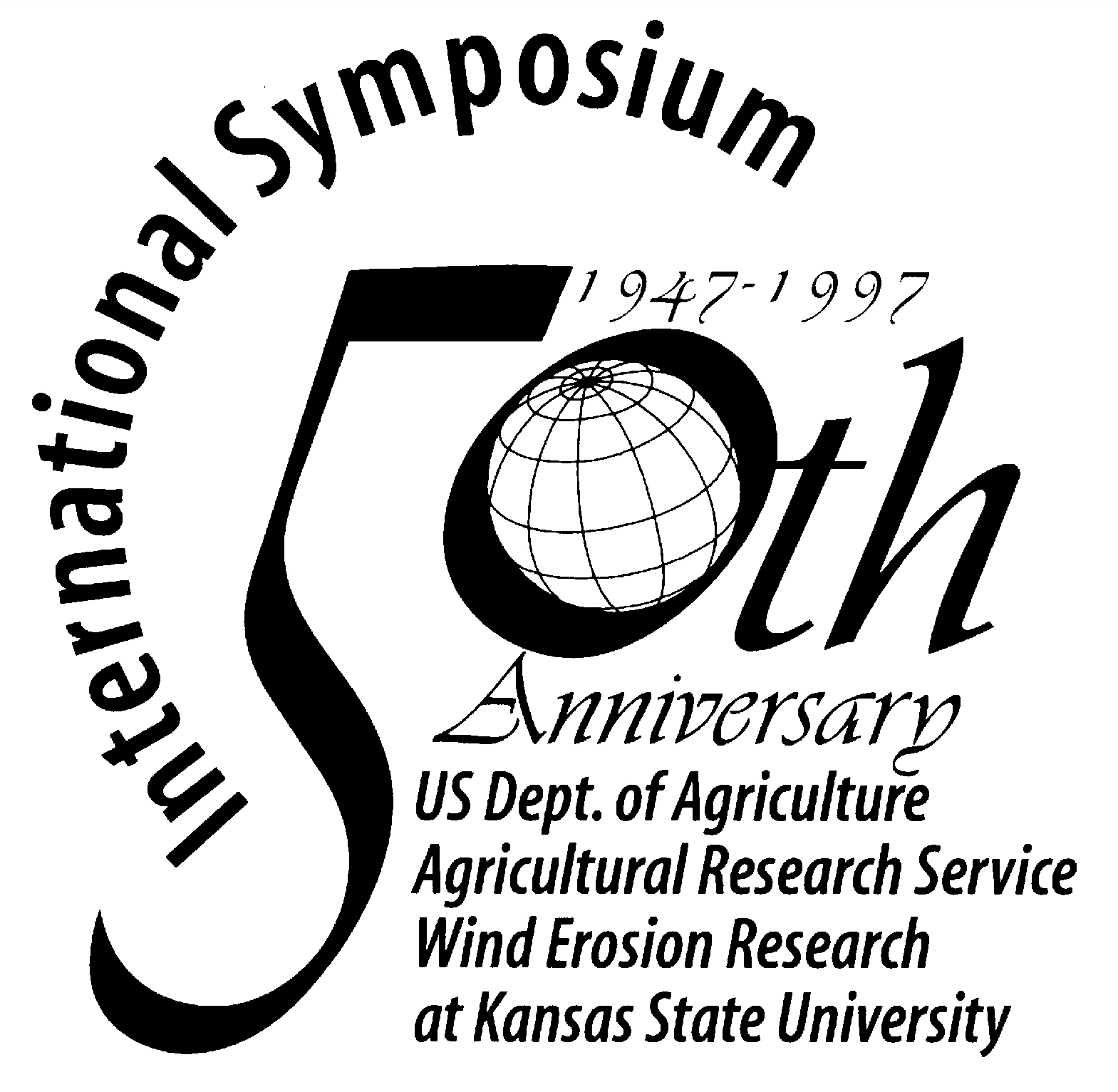|
Fifty Years of Wind Erosion Research by the USDA Agricultural Research Service at Kansas State
University. D. V. Armbrust
Abstract
From 1850 to 1900, the population of the Great
Plains of the United States increased 11 times, from about 700,000 to 8,000,000. Many of
these settlers were farmers, who plowed the native grass sod and planted crops using
tillage methods developed for more humid regions. The introduction of tractors allowed
larger acreages to be farmed. These three events, coupled with the properties of the Great
Plains soils, mostly aeolian derived, and the semi-arid climate of the region, set the
stage for wind erosion during periods of drought. Newspapers reported drought and dust
storms from 1886 to 1895 and again from 1914 to 1917.
As the United States entered the 1930's, two major
events were beginning. First, the collapse of the country's economy, known as the Great
Depression, and an extended drought that caused the "Dust Bowl". Dust storms,
known as "Black Blizzards", rolled across the region and deposited dust on ships
at sea off the East Coast of the United States. The maximum number of dust storms occurred
from 1935 to 1938.
The start of World War II interrupted most soil
conservation research during the first half of the 1940's. The publication of Bagnold's
book, "The Physics of Blown Sands and Desert Dunes" in 1941 became a point of
departure for most basic research on wind erosion in the United States and Canada.
Agricultural research was boosted in the United
States by the passage of the Flannagon-Hope bill, officially known as The Research and
Marketing Act of 1946. This was the source of funds to establish the Wind Erosion Project
in Manhattan, Kansas in late 1947. The project was under the administrative supervision of
the Research Division of the Soil Conservation Service (SCS), now the Natural Resource
Conservation Service (NRCS), until 1953, when all soil conservation research, except that
related to the National Cooperative Soil Survey, was transferred to the Agricultural
Research Service (ARS).
The High Plains Wind Erosion Laboratory was
established at Kansas State University in the Farm Machinery Hall, a building that was
built in 1863 to house the armory of the Reserve Officers Training Core (ROTC) and later
the Department of Home Economics. The Laboratory always has been associated with the
Department of Agronomy at Kansas State University.
Over the years, 19 scientists have been associated with the
Laboratory. Numbers have varied from 1 in 1947 to a high of 10 in 1967. The number has
gradually declined to 4 in 1997.
The first supervisor was Austin W. Zingg, an
Agricultural Engineer, and a pioneer in water erosion mechanics. He assumed his duties in
October 1947 and served until 1953. He oversaw the development of the laboratory wind
tunnel and related equipment. He also began staffing the project.
Zingg hired Dr. William S. Chepil, a soil scientist,
in March of 1948. Dr. Chepil was conducting wind erosion research in Saskatchewan, Canada.
He became project leader in 1953 and served in that capacity until his death from cancer
in September 1963. A new laboratory facility, which Dr. Chepil planned, was completed just
prior to his death.
Zingg also hired Neil P. Woodruff, an Agricultural
Engineer, in 1949. Mr. Woodruff became the project's third supervisor in 1963 and served
until his retirement in September 1975.
Research conducted during the first 28 years began
with developing equipment, such as the laboratory wind tunnel and a portable field wind
tunnel, and related instrumentation and methods for studying wind erosion. Studies were
conducted on the processes by which soil particles are moved and transported by wind;
physical and chemical soil properties that affect soil erodibility; effects of plant cover
and residues, surface barrier, topography, surface roughness, and land use on soil
drifting; and how major soil factors such as texture, organic matter, calcium carbonate
content, water stable aggregates, dry aggregate size distribution, aggregate density, dry
aggregate stability, and soil water affect soil erosion by wind.
Other general topics related to wind erosion and its
control were wind climatology, wind barrier influence, aerodynamic forces, surface
roughness effects, residue conservation tillage, vegetative and nonvegetative soil
stabilizers, plant abrasion and tolerance, air quality, surface soil aggregation, soil
renewal and erosion tolerance, and deep plowing. The laboratory wind tunnel facilities
were expanded throughout the years to its present size.
This early research laid the groundwork for the
development of the Wind Erosion Equation (WEQ). The framework of the equation was
established before Chepil's death, but the equation was published officially in 1965 by
Woodruff and Siddoway.
Upon Woodruff's retirement in 1975, Dr. Leon Lyles,
an Agricultural Engineer, became the leader of the unit. He served in that capacity until
his retirement in January 1988.
During his tenure, research conducted by the unit's
scientists continued to refine some of the earlier work and added some new areas. These
included use of drip irrigation to aid in the establishment of shelter belts in semiarid
climates; air flow over established multirow and single-row windbreaks and barriers;
effect of sandblast damage to crop plants in regard to physiological processes within
plants; small grain equivalent (SGe) of growing plants; effect of soil moisture, packing,
tillage tool shape, tillage speed, and tillage depth on the number and strength of soil
aggregates formed.
Dr. Larry Hagen, an Agricultural Engineer, assumed
leadership upon Dr. Lyles' retirement. During his tenure, most of the research of the unit
was directed to developing the Wind Erosion Prediction System (WEPS). Dr. Hagen turned
over the reins of the unit to Dr. Edward Skidmore, a Soil Scientist, in December 1994, to
focus his efforts on completing WEPS.
I want to give a big thank you to Kansas State
University, the College of Agriculture, and especially the Department of Agronomy for 50
years of support and for the new offices and laboratories in Throckmorton Hall. The unit
moved into these facilities in the summer of 1994.
In closing, I would say that we have come a long way
in the last 50 years in developing our knowledge of wind erosion processes, measurement,
control methods, and prediction. However, until we can control the climate, we have a ways
to go!
References
Woodruff, N. P. and F. H. Siddoway. 1965. A Wind Erosion Equation. SSSA Proc.
29:602-608. |




